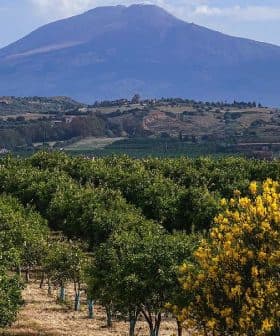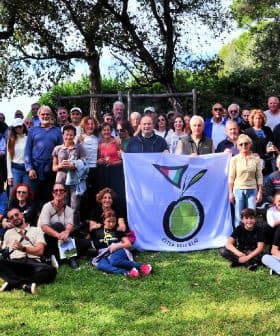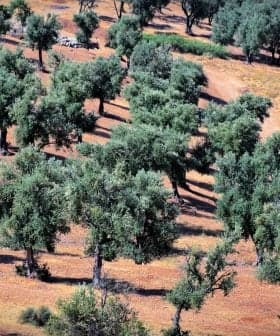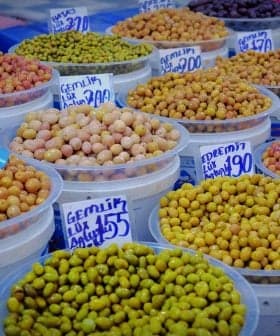Rainfall Will Dictate the Upcoming Harvest in Croatia
Rain or the lack thereof will decide how the olive growing season will go in Croatia, and whether oil prices will rise.
 Vito Prtenjača
Vito Prtenjača The olive growing season in Croatia depends on rain, with olives falling due to drought in some areas. Olive growers are hoping for rain to save the remaining fruits and increase oil quality, with prices expected to rise due to increased costs.
The rain will decide what the olive growing season will be like in Croatia and whether olive oil prices will rise.
Rain at least one month before the harvest will save the remaining fruits. However, it is already too late in some locations where olives have fallen from branches due to the long-term drought.
We are receiving reports that the olives have shriveled due to the long-term drought, and where there is not enough soil to retain moisture, they have already started to fall off.
“The olives turned black and fell,” said Vito Prtenjača, an olive grower from Polača in northern Dalmatia. “Due to the drought, the pits did not become woody, which is a sign that the accumulation of oil has not even started.”
The first impediment to this year’s harvest phase came during flowering and fertilization when extremely high temperatures occurred.
See Also:2022 Harvest UpdatesThere has been no heavy rainfall since February in the vast majority of Croatia’s olive-growing areas, which stretch along the Adriatic Sea from Savudrija in Istria to Prevlaka in the extreme south of Dalmatia. There was even less precipitation on the coastal islands.
“The droughts are such that it is a miracle how the olive trees manage to survive,” said Ivo Lučić, an olive grower from Hvar.
The island, which boasts 250,000 olive trees, has received 113.3 liters of rain per square meter. Most of this fell mainly in the winter and early spring.
Rain was also absent for the Feast of the Assumption, a Christian holiday on August 15. In previous years, the date has usually marked the end of the summer heat and heralded the arrival of autumn.
“The drought continues. The fruits are falling off,” complain the olive growers. It is the most difficult for those whose olive groves are on poor, skeletal soils, especially those without irrigation.
Lodran Ljubenkov, president of the Cooperative Association of Dalmatia, confirmed that the drought was causing plenty of problems for local growers.
“We are receiving reports that the olives have shriveled due to the long-term drought, and where there is not enough soil to retain moisture, they have already started to fall off,” he said. “Where there is soil in the olive groves, those trees will lose their fruit in another two weeks.”

Fruits dry up and fall off (Photo: Marijan Tomac)
As a result, olive growers are looking impatiently at the sky. If it rains in the next few weeks, the fruits will recover.
Additionally, there have been no significant reports of diseases or pests, so the oil quality may be above average.
See Also:Croatian Olive Grower Innovates to Overcome Drought, PestsProducers also expect olive oil prices to rise, partially due to the dramatic increase in the costs of protective agents, fertilizers, fuel and packaging. In addition, the price of olive milling is also expected to increase.
“The price of electricity for processors has increased up to 500 percent in the meantime,” said Željko Vrsaljko, the owner of an oil mill in Nadin.
Until now, extra virgin olive oil has been sold in Croatia for HRK 100 (€13.30) to HRK 150 (€19.95) per liter.
According to many, the price will go up at least 30 to 50 percent. The award-winning olive grower Ivica Vlatković also thinks olive oil prices will rise but added the exact increase will depend on supply and demand.
“On the olive oil market, there are now oils that reach prices of up to HRK 1,000 (€133) per liter,” he said. “As a rule, such oils are of top quality in small bottles of 1,000 milliliters packed in excellent packaging and served to people who appreciate quality oils and are ready to pay for them.”
“You also have oils on the market packaged in plastic bottles that cost HRK 80 (€10.65) per liter, and they will find buyers,” Vlatković added. “Accordingly, prices have been variable until now and will be from now on.”
It is critical for olive farmers that rain comes as soon as possible. If so, the fruits will recover and fill with oil in a few months, bringing relief to the majority of Croatian olive growers.
If this happens, 2022 will have been a solid olive growing season. Olive groves cover about 20,000 hectares in Croatia, yielding approximately 29,000 tons of olives. From these, producers can squeeze about 3.75 million liters of olive oil.
This is still not enough to satisfy domestic needs for olive oil, but, as they say in Dalmatia, “something is better than nothing.”
Share this article









